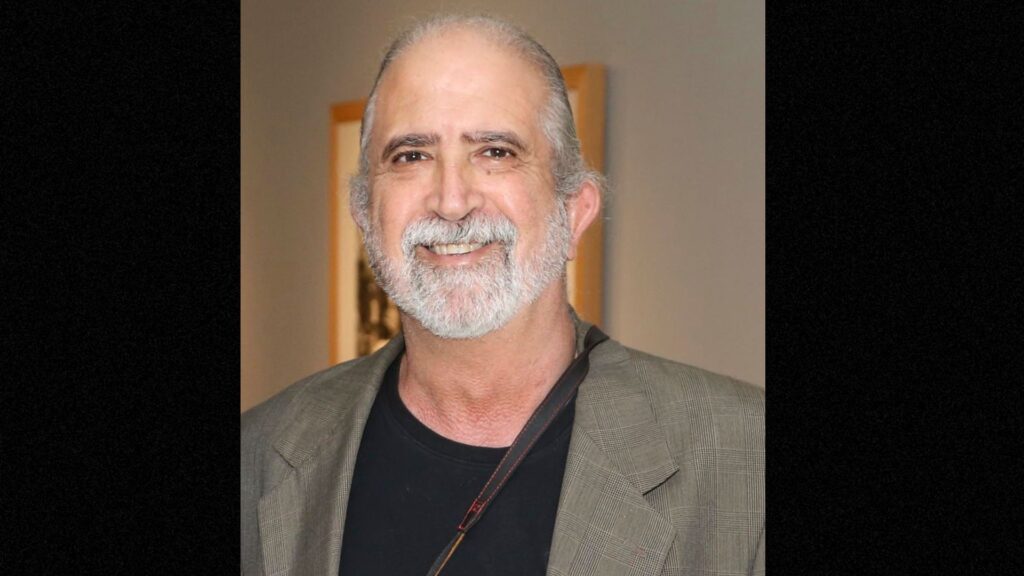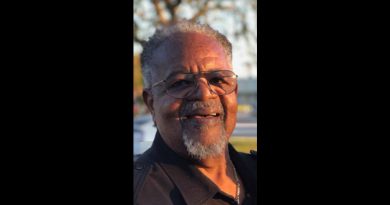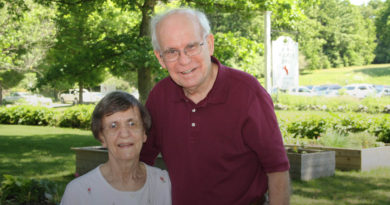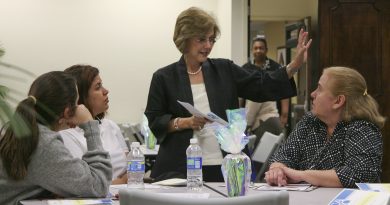Beloved Wolfson Campus Photography Professor Dies At 71
By Nikole Valiente and Isabella Arce
Barbara Matehu got used to Joseph Tamargo’s phone calls.
In 2015, she studied photography with the Wolfson Campus professor, eventually serving as his lab assistant for five years.
When Tamargo retired in 2020 after nearly four decades at Miami Dade College, the two remained tight.
They traveled, drank coffee, chatted about their passion for photography and often had lunch at Matehu’s grandmother’s house.
“We cultivated a friendship,” the 29-year-old said. “He was like my grandfather.”
Matehu, who is a freelance photographer and videographer, grew fond of Tamargo’s inspiring phone calls.
“Today will be a good day,” he would often tell her.
A month after Tamargo’s abrupt passing, she still sits by the phone.
“I’m waiting for him to call me,” Matehu said.
Tamargo died on Oct. 22 at Baptist Hospital in Kendall, after undergoing a procedure to remove a cancerous growth in his bladder. He was 71.
On Nov. 7, more than 150 family members, friends, colleagues and students celebrated his life at his viewing at Caballero Rivero Little Havana.
They exchanged laughs and smiles and swapped their favorite Tamargo stories; tears rolled down some faces while others clutched onto mementos of their beloved professor, including Nikon and Canon cameras, a black paisley bandana and Kodak film rolls that read, “I love you old man” and “forever in our hearts.”
Tamargo is survived by his wife of 43 years Mayra Tamargo, sons Gabriel, David and Derek Tamargo, older sister Yolanda Tamargo, granddaughter Anais Tamargo, niece Christie Goheen, nephew Anthony Smith and his dog Wolf.
“My father should have been here today…” David said at the viewing. “He had incredible spirit, incredible energy and a desire to continue traveling with me. We had so many plans for books, for exhibitions. We were just getting started.”
Early Years
Tamargo was born in May of 1953 in Manhattan to Grace Mira and Rolando Tamargo. They moved to Miami when he was three to be closer to his paternal grandmother, who lived in Cuba.
Although Tamargo never owned a camera in his childhood, once he picked one up in 1970, he never put it down.
“There was no defining moment,” David said. “He didn’t look at the Mona Lisa and decide to be a painter—he was passionate about photography his entire life.”
As a young adult, Tamargo was part of the “hippie scene” in South Florida. He frequented a club called The Place in North Miami to watch bands such as WOWII and Kraker perform. At some point, he even rocked an afro and played drums.
“After we graduated from high school, I think all of these Cuban kids started attracting each other like a magnet…” said Tony Labat, Tamargo’s friend of 52 years. “The fashions we would wear, the clubs that we would go to, the concerts. We started creating our own community.”
Tamargo graduated from Miami Beach Senior High School in 1972. He earned a bachelor’s of fine arts in art from Florida International University in 1976 and a master of fine arts in photography from the University of Miami in 1993.
Finding Love
In 1979, Tamargo, who worked at a portable library in Miami, met his wife-to-be Mayra after she answered the phone for her friend Anita Summer, who had requested a book.
“I said, ‘Anita, I don’t care what you say, but I want you to get this call because I want to meet this man,’” Mayra recalls. “I fell in love with just that one call.”
On their first date, Tamargo arrived at her house with three white roses, foreshadowing the birth of their three boys, Mayra said.
A year later, they got married at St. Dominic Catholic Parish and spent their honeymoon in Spain and San Francisco.
By 1982, Mayra gave birth to their first son, Gabriel. They moved into a make-shift apartment in her parents’ house near Westchester. The following year, David was born and in 1984, they welcomed their third son Derek.
“As a husband, he was very romantic and very serving,” said Mayra, who was temporarily paralyzed and battled cervical cancer during their marriage. “He always made sure that he was catering to me, even cooked for me and took care of me.”
Shifting Gears
Although Tamargo aspired to pursue a career in photography, he put his dreams aside to provide for his family. He worked midnight shifts for Eastern Air Lines, supervising the aircraft cleaning crew. In 1986, he became an adjunct photography professor at MDC.
But his job at the airline remained his family’s ticket to travel. They took spontaneous vacations to San Francisco to eat Chinese food and visited museums. Tamargo always brought his camera.
When Eastern went bankrupt in 1991, the then 38-year-old landed a full-time teaching position at Wolfson Campus. He taught courses such as: Introduction to Photography, Intermediate Photography, Advanced Photography, Color Photography 1 and 2, Visual Arts Workshop and Portfolio Preparation.
The professor was a proponent of analog photography. His teaching philosophy centered around authenticity and intentionality; he wanted students to tell meaningful stories with their photos.
“Some hated him, others loved him, because he was very honest,” recalls Matehu, who spent hours developing film in the darkroom. “He was not a perfectionist, but he wanted you to know all you needed to know to print so that later, you could break the rules.”
Tamargo was respected for his blunt critiques.
Andrew Woon, who was Tamargo’s student from 2001 to 2003, recalls showing the professor a sculpture he created, shortly after 9/11. It was a suitcase filled with essentials needed to survive a terrorist attack such as canned food, duck tape and a gas mask.
Tamargo was critical of the project. He asked, “What was in the suitcase and why was it there?”
When it was time for Woon to submit his project, he reminded the professor that he had “ripped it apart” and “made fun of [him].”
Tamargo nodded his head and replied, “You’re so stupid.”
“I realized at that moment he wanted me to stand up for my convictions. So he’s pushing me, and initially, you know, I folded,” Woon said. “And from that moment on, I can honestly say, I walk into a critique being able to stand up and defend my work.”
After retiring from Wolfson Campus in 2020, Tamargo returned a few years later as an adjunct professor—with his signature ponytail, black beret, dark circular shades, and camera over his shoulder.
“He had no need to keep teaching, but he loved his students,” Yolanda said. “Nothing gratified him more than that.”
Point And Shoot
In 1999, Tamargo was accepted into the FullBright Scholar Program—a government funded international exchange program that provides grants to study, teach or complete research abroad—for his project From Atget to Friedlander: Street Photography.
The endeavor consisted of teaching and researching street photography in Santiago, Chile.
From 2001 through 2014, Tamargo continued traveling to the county to document the Hills of Valparaiso. He took more than 40,000 photos.
Tamargo was captivated by people’s stories. He often photographed people in the streets of Chile. He printed the images in the United States and gifted them to his subjects the following year.
“He had a way of piercing through the veneer of the world and looking deeper [into] what the world was like, and it came out so clearly in his photography,” said longtime friend and Books & Books owner Mitchell Kaplan, who frequently featured Tamargo’s work in the bookstore since its launch in the 1980s.
Tamargo’s work has been featured at the George Eastman House Museum of Photography and Film, Lehigh University Art Gallery’s Latin American collection, Southeastern Museum of Photography and the Museum of Art and Design.
Changing Lenses
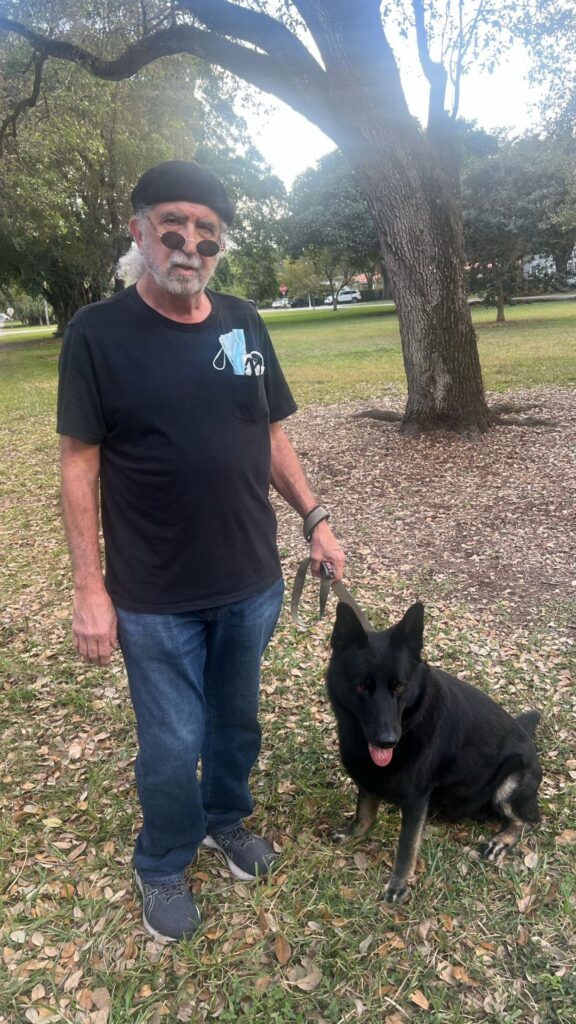
Toward the end of his life, Tamargo was on a mission to create a photobook of landforms—specifically sand dunes—across the seven continents.
Last summer, Tamargo and his son David documented the Tottori Sand Dunes, located on the western coast of Japan. Prior to that, the professor traveled to Morocco and Iceland.
David, who has Tamargo’s negatives from those experiences, will be completing the project. He is seeking locations to exhibit his dad’s work.
“You could never call him old,” Yolanda said. “He was 70 years old but he was 20 years young.”
Tamargo also continued feeding his hunger for knowledge. He was learning to speak French and to make mantecado ice cream.
But Tamargo remained a simple man at heart.
He enjoyed walking his German Shepherd Wolf down Country Club Prado Parkway in Coral Gables.
And he ate the same breakfast every Friday at Sunny Side Café in South Beach—scrambled eggs with cheese, hash brown potatoes, bread and a Cuban espresso.
“I looked forward to those Fridays religiously; it was just a very special time,” Labat said. “I will miss him a lot. It’s going to be hard for a while.”
Some of the interviews for this story were conducted in Spanish.
Click here to subscribe to our bi-weekly newsletter, The Hammerhead. For news tips, contact us at mdc.thereporter@gmail.com.

